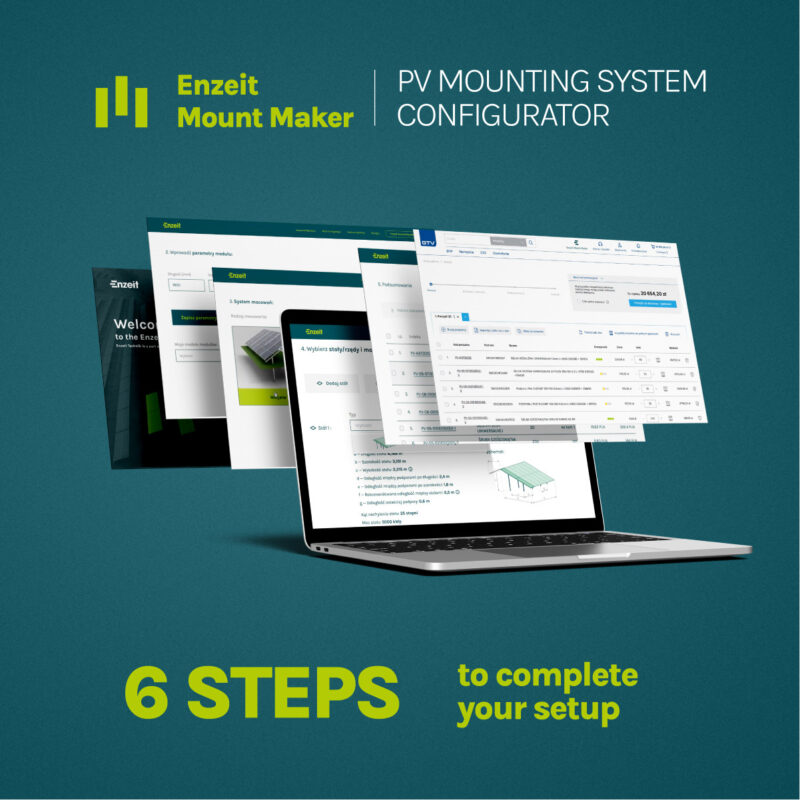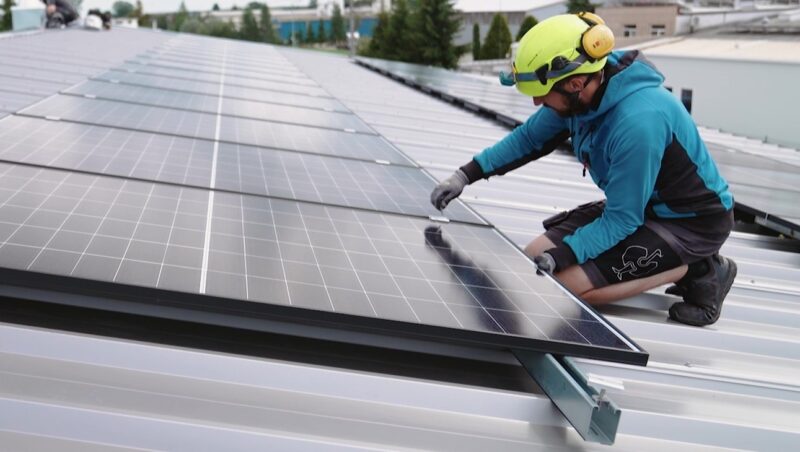Aktualności
Installing an Electric Vehicle Charger – How to Connect it to a Residential or Industrial Electrical System?
As the popularity of electric vehicles (EVs) grows, more individuals and businesses are considering installing chargers for their vehicles. This process requires not only the appropriate equipment but also knowledge about integration with the existing electrical grid. In this article, we discuss the stages of installing an EV charger—both in residential and industrial settings—and address the key technical and regulatory issues involved.
Installing an electric vehicle charger – where to set up a charging station?
Before we dive into the process of installing an EV charger, let’s first consider where these so-called wallboxes can be installed.
An electric vehicle (or hybrid) charging station can be installed in various locations depending on the needs and available infrastructure. In single-family homes, chargers are most commonly installed in garages or on driveways, where the devices are close to the parking space and protected from the weather.
In multi-family buildings, chargers can be placed in shared parking areas, which requires agreements with the property manager or homeowners’ association. You need to submit a request to the relevant administrative body and commit to covering all costs related to the installation of the charging equipment. It’s also necessary to ensure that the building’s energy supply is sufficient to meet both current demand and the needs of residents. If the available supply is insufficient, a request must be made to the energy provider to increase the connection capacity (before the charging station is connected).
Businesses with electric or hybrid vehicles in their fleet may consider installing a wallbox near designated parking spaces in a garage or outdoor parking lot. In this case, a charging post may be an ideal solution.
Now that we know that EV chargers can be installed in various environments—residential or industrial—it’s time to take a closer look at the types of chargers and the installation process itself.
Electric vehicle chargers – which type is best?
Choosing the right EV charger depends on many factors, such as the installation location, available power, and the user’s needs regarding vehicle charging time. There are several main types of chargers that can be installed in both residential and industrial settings.
Home chargers include AC and DC chargers. AC chargers are the most commonly found in single-family homes, operating on a 230V voltage and offering power from 3.6 kW to 22 kW. They are relatively inexpensive and easy to install, making them ideal for home use, where charging can take place overnight. Their disadvantage is slower charging compared to DC chargers.
High-power DC chargers are used by businesses and in public places such as shopping centers, city parking lots, or hotels. They offer power starting from 50 kW, enabling very fast EV charging. These are ideal for vehicle fleets, such as in transport companies.
DC chargers are less frequently used in homes due to their higher cost and more complex installation but offer faster EV charging. They are suitable when charging time is crucial and are often used in industrial and commercial installations.
The advantage of DC chargers is their significantly shorter charging time, but this comes with higher purchase and installation costs and greater demands on the electrical infrastructure.
Electric vehicle charger installation – step by step
Step 1. Assessment of the electrical infrastructure
When planning an EV charger installation, the first step is to conduct an audit to select the appropriate equipment. Consider the type of electrical installation (single or three-phase) and the power of the charger, which is often limited by the vehicle manufacturer.
If the EV charger supports a lower power than the wallbox (e.g., 22 kW), charging won’t exceed the power supported by the onboard charger. Therefore, before installing a wallbox, ensure that its maximum charging power is suitable for your vehicle. Proper protection devices, such as circuit breakers and residual current devices, must also be selected to ensure safe system operation.
Step 2. Selecting the charger installation location
Before installing a wallbox, carefully choose the location for the EV charger. For home charging stations, the best place is typically the garage, close to where the vehicle is usually parked. For a company fleet, it’s best to install the charger near designated parking spots.
When planning an outdoor installation, choose a wallbox with an IP66 rating, ensuring its durability in various weather conditions, especially rain and snow.
For outdoor installations, a special mounting post is often used. Before beginning installation, check if the electrical installation is close enough to connect the device using the factory power cable.
Step 3. Choosing the right charger for the electrician
Choosing the right charger for the EV is crucial for efficient charging. Ensure the selected charger is compatible with your specific EV model to guarantee smooth and reliable charging. It’s also important to select a charger with adequate power suited to the user’s needs. A higher-power charger can reduce charging time, but it may increase the load on the existing electrical system.
Step 4. Installing the EV charger
To install a home charger, it must be connected to the home’s main electrical panel, which often requires laying a new power cable.
It’s recommended to install residual current and circuit breakers to provide adequate protection for the installation. After installation, the entire system should be thoroughly tested to ensure it works correctly and poses no risks.
Industrial chargers must be connected directly to the facility’s electrical grid, which may require upgrading the existing infrastructure. For large installations, energy management systems are recommended to efficiently manage energy consumption. Industrial installations may also need to meet additional regulatory and legal requirements.
Step 5. Connecting the charger to the electrical system
It’s important to have the installation performed by a qualified electrician to avoid the risk of electric shock and ensure the charger operates optimally. You also need to ensure that the electrical infrastructure can handle the additional load from charging the EV. The installation of an EV charger typically takes 1-2 hours.
After installing the EV charger, it’s essential to regularly check its technical condition. Ensure all connections are stable and there are no visible damages. Monitoring energy consumption is also important to ensure the system operates efficiently.
EV charger installation – summary
Installing an EV charger is an investment that brings many benefits both in residential and industrial settings. To ensure safety and efficiency, proper preparation and execution of the work in accordance with technical and legal requirements are crucial. Conducting an audit of the existing electrical system, selecting the right location, and choosing the appropriate charger are essential steps in setting up a charging station at home or for a business.




